MH17: Netherlands wrestles with huge criminal case
- Published
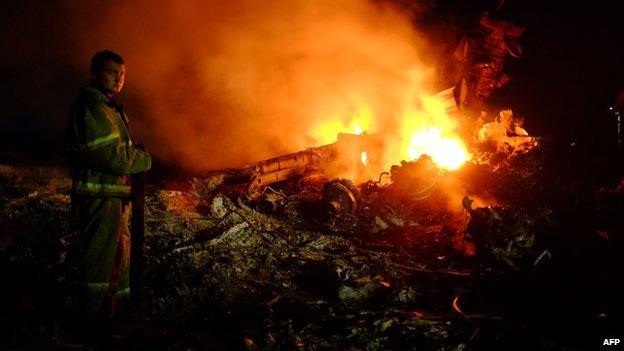
Debris from MH17 was scattered across 35 sq km (13 sq miles) of rebel-held territory
A month after the MH17 air disaster in eastern Ukraine the investigation still has a very long way to go, the BBC's Anna Holligan reports from The Hague.
"If you told me a month ago that I'd be happy my daughter's body was in one piece and not 17 pieces, I'd have thought you were crazy... now of course I am just grateful that she is home."
Hans de Borst's only child, Elsemiek, was identified on 8 August. She was 17 years old. Elsemiek is one of 127 victims identified so far by international teams of forensic investigators and pathologists working at a military base in Hilversum.
"They used her teeth and a ring," Elsemiek's father tells us. "I told the Family Detectives about the ring. She didn't wear much jewellery but always this ring. It had the letters 'Els'."
The dedicated "Family Detectives" have been assigned to act as a go-between. They provide a buffer between the clinical forensic investigation process and the personal grief of the relatives.
Two-thirds of the 298 people on board Malaysia Airlines Flight MH17 were from the Netherlands. That is why the Dutch have taken the lead in identifying the bodies, trying to establish what caused the crash and running the criminal investigation.
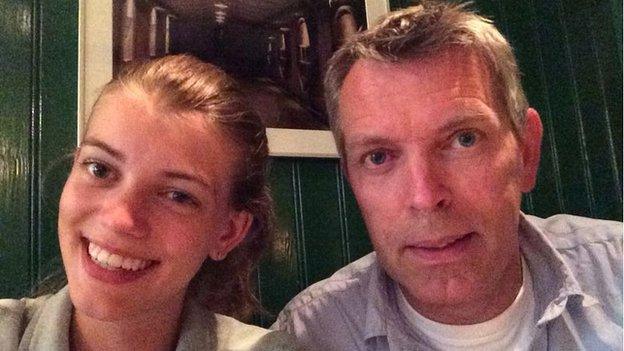
Hans declined to see Elsemiek's body - he says "I want to remember the way she was before"
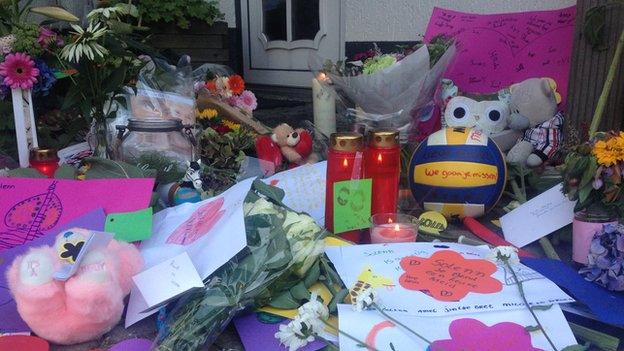
A shrine for a family of six from Neerkant who died in the MH17 crash
Western governments suspect that the jet, with 298 people on board, was hit by a Russian surface-to-air missile fired by pro-Russian separatists. The rebels and Russia blamed the Ukrainian military for the crash.
Like most of the families, Hans de Borst gave DNA samples a week after the crash. He was also offered the chance to see his daughter's body in the makeshift morgue. He declined:
"They told me she is in one piece. So in that way maybe I am lucky. But she is damaged of course. I don't want to see that. I want to remember the way she was before... They took photographs, in case I change my mind in 10 years time."
Who did it?
This is the biggest criminal investigation ever conducted in the Netherlands.
"Never before have we had a murder case with so many victims," said Wim de Bruin from the Dutch prosecution service, fielding press inquiries from all over the world. Passengers from 10 different countries were on board Flight MH17.
Ten Dutch prosecutors and 200 police officers are involved in gathering and preparing the evidence for a criminal trial.
There are three main questions about the eventual MH17 trial: Where will it be conducted? What crimes will the accused be charged with? How long before we see the suspects in court?
The Dutch prosecutors are still in the initial stages of the criminal investigation, but they have already dismissed speculation that the trial could be held at the International Criminal Court in The Hague.
The ICC only takes cases if countries are unable or unwilling to prosecute. The Dutch are willing and able.
Under the current plan, the suspects would be extradited to face trial at the District Court in The Hague. But extradition would require the host country's co-operation, once the suspects are identified.
Wim de Bruin says they are considering "several grounds and possibilities" concerning the charges.
"Of course murder, but we also have the crime of 'wrecking an airplane' and we could use international criminal law - that would mean possible charges of war crimes, torture and genocide."
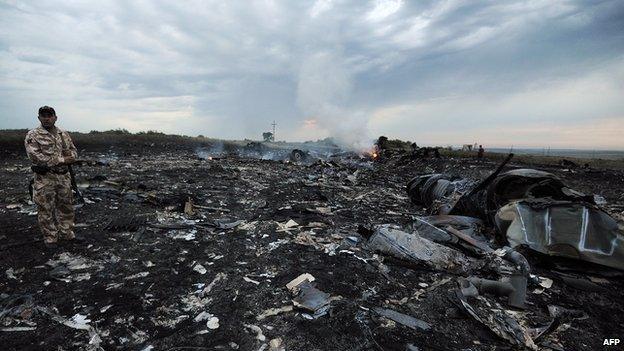
The number of missing bodies is still unknown
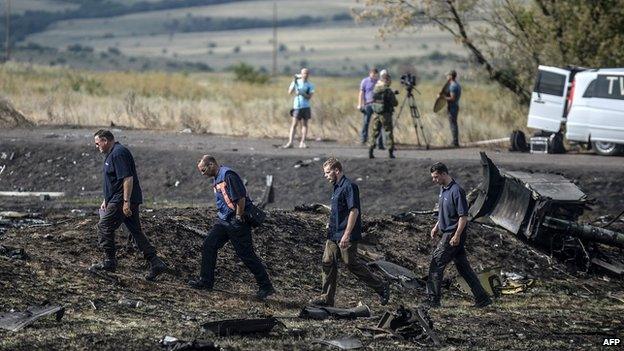
Investigators examine the wreckage near Grabovo, Ukraine
Lockerbie lessons
It is impossible, they say, to give a time frame. The only reference they have is Lockerbie. Pan Am Flight 103 was blown up over Scotland in 1988, killing 259 people on board and 11 others on the ground. In 2001, a Libyan intelligence officer was jailed for the bombing.
Yet questions remain about the bomb plot - not only the perpetrators but also the motives. In 2003 Col Muammar Gaddafi - later killed in the Arab Spring - accepted responsibility and paid compensation to the victims' families.
"With Lockerbie it took three years for the investigation and then another seven for the trial," Mr De Bruin recalls. "And that was with a plane that crashed in a peaceful place. With MH17 the case is more complicated."
The passengers were catapulted into a conflict zone. The evidence is scattered over a 35 sq km (13 sq mile) area, across sunflower fields and farmland.
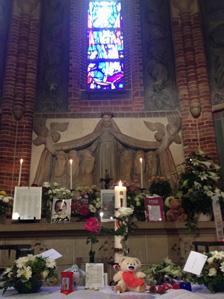
Tributes in a Hilversum church: Three local families and a teenage boy died
And there are concerns about what happened to the debris in the initial days after the crash. Was vital evidence lost or tampered with? Two Dutch prosecutors flew to Kiev but have been unable to access the site in eastern Ukraine.
Some say gaining control of the crash site around Grabove has become a point of honour for the Ukrainian government forces and the pro-Russian separatists fighting them, making visits to the area risky.
On 6 August the Dutch Prime Minister, Mark Rutte, announced that the Dutch forensic investigators and their sniffer dogs were pulling out until the situation calmed down.
More than 220 coffins have been returned to the Netherlands with an unknown number of passengers inside. They don't know how many bodies are still missing, and not all of the remains have been recovered.
What caused the crash?
A team of 25 air crash investigators is trying to establish what destroyed the plane.
Experts from Ukraine, Russia, Germany, the UK, Australia, Malaysia and the United States are working at the rather nondescript Dutch Safety Board headquarters in The Hague.
Normally with any aviation investigation they would start at the crash site, but counter-terrorism experts feared the presence of aviation investigators might jeopardise the forensic team's efforts to recover the bodies, so they have been forced to rely on alternative sources of evidence.
Wim van der Wegen from the Dutch Safety Board says they already have enough to prepare a preliminary report. "We are using the voice recorder, the black box flight data recorder, satellite images, information from air traffic control and photos taken by people who were able to visit crash site."
They expect to publish the preliminary report within two weeks. It will not attribute blame or liability.
From the moment the first remains were repatriated, the Dutch authorities have strived to restore the honour and dignity that was stolen from the families.
Bringing the perpetrators to justice would help to heal a wound that has cut deep into Dutch society.

